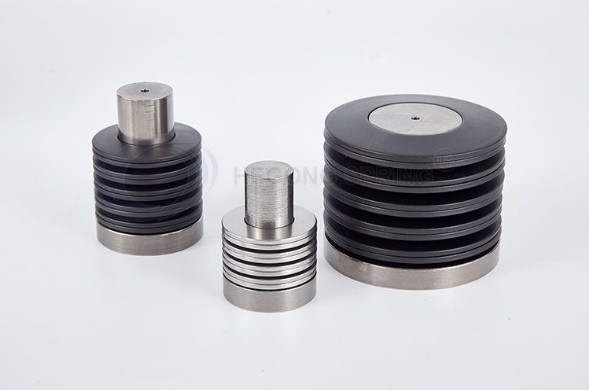How Do You Stack Disc Springs?
Stacking Belleville disc springs allows for precise customization of the load and/or deflection of the springs. Search results indicate that when stacking disc springs, you can effectively manage load capacity and deflection to suit specific needs.
Understanding Disc Springs
Disc springs are unique, conical components that deliver force under compression. Their distinctive design enables a high load-bearing capacity and significant deflection with a compact size. Proper stacking of disc springs entails arranging several washers in a strategic order to meet the required load and deflection specifications.
Choosing the Right Configuration
Before starting the stacking process, it's vital to assess the application's requirements. Factors such as load capacity, deflection needs, and space limitations significantly influence the choice of configuration. Disc springs come in a variety of shapes, sizes, and materials, allowing for tailored solutions to meet distinct applications.
Considerations for Stacking Disc Springs
When stacking disc springs, engineers must evaluate several critical factors to ensure peak performance and reliability.
1. Orientation and Arrangement:
The orientation of each washer is crucial in stacking either in parallel, which boosts load capacity, or in series, which enhances deflection. Aligning the arrangement with the application’s specific requirements is imperative.
2. Material Compatibility:
Disc springs are manufactured from various materials such as stainless steel and carbon steel. It is essential to examine material compatibility with the working environment to avoid concerns like corrosion or material fatigue, which can undermine service life.
3. Preloading:
Preloading refers to compressing the disc springs to a specific degree prior to applying external loads. Proper preloading helps ensure uniform load distribution by eliminating potential gaps between washers.
4. Stacking Sequence:
The order in which disc springs are stacked can greatly affect their overall performance. Adhering to the manufacturer's guidelines or conducting tests will assist in finding the most effective stacking sequence for the relevant application.
Stacking Disc Springs in Parallel
Parallel stacking involves placing multiple disc springs in the same orientation, thereby amplifying the total load capacity of the stack and distributing the force evenly across it when a load is applied.
Benefits of Parallel Stacking include:
- Increased load capacity
- Enhanced stability
- Uniform distribution of force
However, challenges include limited deflection compared to series stacking.
Stacking Disc Springs in Series
In contrast, series stacking places disc springs in alternating orientations to create a nested configuration. This setup maximizes overall deflection while keeping the load relatively stable—ideal for scenarios prioritizing deflection.
Benefits of Series Stacking include:
- Greater deflection
- Constant load characteristics
- Appropriate for limited space applications
On the flip side, series stacking can lead to a lower load capacity relative to parallel stacking.
Optimizing Performance Through Proper Stacking
For optimal performance with stacked disc springs, meticulous consideration of the application's specifications is necessary, alongside the application of best practices. Engineers should conduct comprehensive calculations, simulations, or testing to identify the most appropriate stacking configuration to meet their needs.
Ensuring Safety and Reliability
Effective stacking of disc springs is crucial for the safety and reliability of engineering systems. By thoroughly understanding load, deflection, and space limitations, engineers can devise strong solutions that fulfill or surpass application performance requirements.
Conclusion
In summary, mastering the stacking of disc springs is a pivotal factor in unlocking their complete potential within engineering contexts. Engineers must carefully contemplate the application's needs, whether opting for parallel stacking for higher load capacity or series stacking for enhanced deflection, in order to achieve optimal reliability and performance.
Contact Us for Disc Spring Solutions
For all your disc spring inquiries, connect with us today. As a prominent disc spring supplier, we offer high-quality products and expert guidance to assist in optimizing your engineering applications. Collaborate with us to secure efficient and reliable system performances through appropriate disc spring selection and stacking. Your success is our priority, and we’re ready to deliver tailored solutions for your unique requirements.


